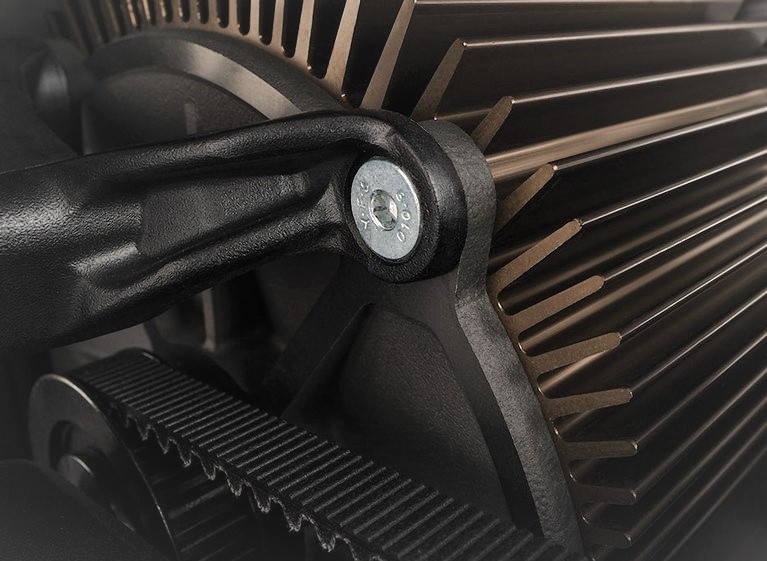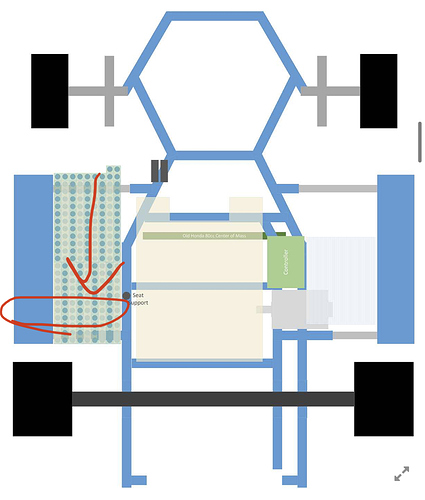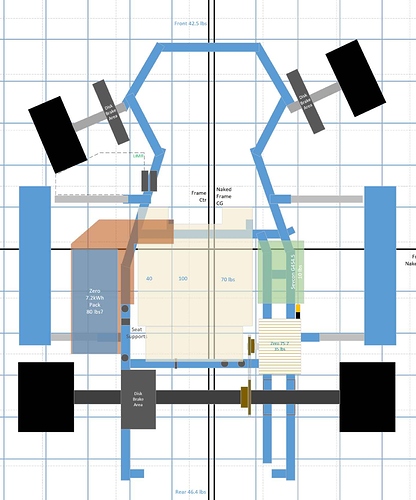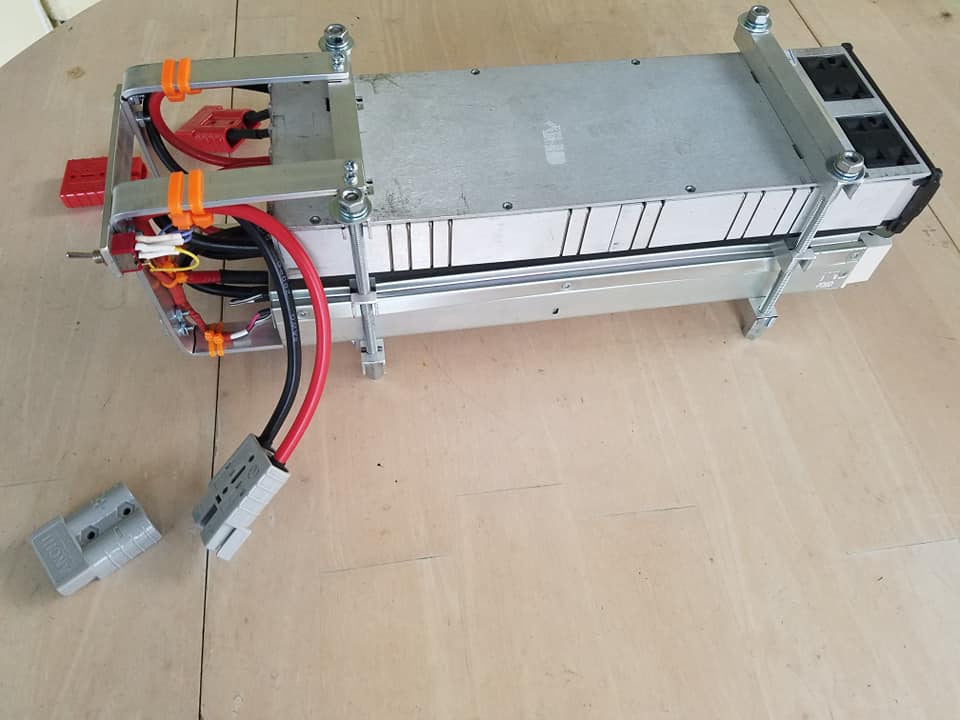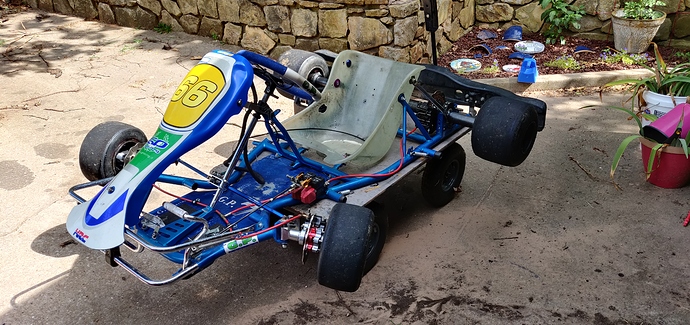Yes, buying it (hopefully) from an salvage auction. Often bikes are crashed or back into and the handlebars are torn up and body panels scratched up. None of that makes any difference here as long as the guts are good. But I’d avoid any flood ones for obvious reasons. Teaser photo…
Thanks. I learned something.
How much do these go for?
I’m not sure what you are asking exactly, but I expect a recent model salvage bike to go for ~$2K. Then you have to pay fees and shipping if not local, so about $2600 is what I expect to pay, picking it up myself.
The BMS - Battery Management System
The BMS is a critical part of the complete package. A battery is made up of many cells, all of which are unique and will charge and discharge at slightly different rates. The job of the BMS is to ensure the management of those cells so they are operated in a safe manner.
CHARGING
One of the jobs of the BMS is to make sure that all those cells stay nearly the same in voltage when charging so that you don’t have some that undercharge and some that overcharge. If you only monitored the total sum of the cell voltages and charged the battery to a certain voltage without a BMS, those differences could cause some cells to go beyond their “full” voltage and destroy the cell, and possibly the entire battery and vehicle. A BMS balances the cells by applying a resistive load to those cells that are too high in voltage, draining them of charge until they are essentially identical in voltage to the other cells. For a large battery it is important to have a quality BMS with large resistors (the load) that can do this job.
Another job the BMS does in charging is to provide voltage and temperature information to the charger so that it knows how fast to charge, and when to stop. A battery can charge quickly up to about 80%, at which point the charger needs to reduce the current so the battery is not overheated and damaged. This is why EVs advertise “0%” to 80% charge times and then quietly mention the additional time to get to 100%. When the battery is full, the charger will be told to stop, and if it does not for some reason the BMS will then tell the contactor (a high current DC on/off switch) to open, isolating the battery from the charger and preventing damage (and possible fire).
DISCHARGE
The BMS is also involved when the battery is being used. It tracks the cell voltages and temperatures to ensure that no cell goes below a cutoff voltage while in use. If the cutoff voltage is reached by any cell, then the battery pack is considered fully discharged and it will open the contactor. Additionally, when too much load is placed on the battery such that it gets to a set temperature, the controller should then “derate” the system by reducing current draw until the battery cools off. If for some reason this does not happen, at a set point the BMS will then open the contactor to protect the battery.
CAPACITY PLANNING
Knowing the amount of current the battery is supplying, the voltage of the entire pack along with the individual cells supplied by the BMS, plus other load criteria by recording it during a race for later analysis allows the kart owner / operator to understand if the battery is too large (too heavy), too small (cutting power at the end of a race), or just in the sweet spot. This data can also be used to compare different types of cells to determine which type of battery is best for their application with the current motor and controller being used. Additionally, when added to track positional data, it can show where energy is being wasted and where more might be used to reduce lap times.
Very cool thread, thanks for sharing!
EkartGo Spreadsheet Version 1.5
Added / Changed:
LiPo load ratings to better match kart measured values under load
Parallel calculations to fix low C rate battery amounts (high kWh low C rate)
Excellent information. Thanks.
Excellent discussion. Sorry for being late in asking this question but I’m just now reading through all of the post. What is the width in inches between the space shown below? Thanks.
That varies with the kart and brand of course, but for my old GP Racing (CRG) shifter kart frame it is:
10 inches from the seat brace (slants inward to the seat) to the inner edge of the plastic side bumper
14.5 inches from the seat brace to the outer edge of the the side bumper would be
I’ve linked my latest visio drawing. I’m working on a freecad 3D version, but I’m still not very good with that software yet.  It’s pretty accurate, but I mainly put it together to get rough ideas on placement and weight distribution.
It’s pretty accurate, but I mainly put it together to get rough ideas on placement and weight distribution.
Thanks. We’ve been experimenting with different battery sizes and shapes. The challenge is to create a battery large enough for sufficient racing time but still small enough to fit on the left side of the driver. This is good information. Really appreciate it.
Version 1.8
Added / Changed:
Separated cells by packaging type
Added percent remaining of battery charge for time and load specified
Added more motors
I agree that battery design is a difficult and time consuming task. Getting the balance of capacity, weight, and cost right while still maintaining reasonable cell temperatures is non-trivial. Especially as a manufacturer.
For the power level I’m looking at, I must admit I rather like the simplicity of the large pouch cells, both from minimizing the number of connections required as well as the ease of cooling, especially compared to cylindrical cells. I can see why Zero decided to go this route after their initial models. However, due to the high capacity they are more expensive to test. I’m considering buying one of the 1000W West Mountain Radio testers with the Extended Software license so I can take throttle input recordings to vary battery load. This should better approximate how it will perform under real world conditions while also being able to measure everything on the bench. More than anything I don’t like surprises on the track, especially things overheating, for which there are really no standards for which manufacturers provide information.
Definitely want to hear how it goes with the pouch cells. We like the 18650 cells but you are correct in that they are not simple. Lots of connections which is taking plenty of “pre-work” before we even start. Sounds like you are really on a good path to success. Keep us posted and (of course) include lots of pics and videos. ![]()
I have used spim08hp pouch cells for my e-kart. My friend is going to build a new one out of LG pouch cells. Looking forward to test them.
Definitely want to hear how that goes. Hope to have my next prototype battery pack assembled within a few weeks. Will share some pictures as soon as possible.
Waiting is hard… Come on Copart, get this auction scheduled already. I really don’t care about getting the title right away! 
Anyhow, went ahead and committed to buying this 6kWh charger for home/track. It’s actually made from two 3kWh DC power supplies wired in series. In combo with the “on-board” (off-board) Zero 110v charger that will be 7kWh for a ~30% to 100% charge in about an hour.
For testing days (longer runtime) I’ll need a gas generator to power it. Yes I know that’s crazy, but until this track installs 240v outlets that’s the only option. Apparently this isn’t a big deal at a lot of European tracks, like those in Estonia! 
Anyhow, here is another kart that is rather similar to what I’m building (once I ever get to go pick up the motorcycle). But, not for $22k.
Now that is an awesome charger!
Getting the old kart cleaned up. Front and rear brakes on and bleed. Now for the go fast parts… Goal is September.
That is awesome!. Very exciting project. Can’t wait to see pictures and video of it in action.
